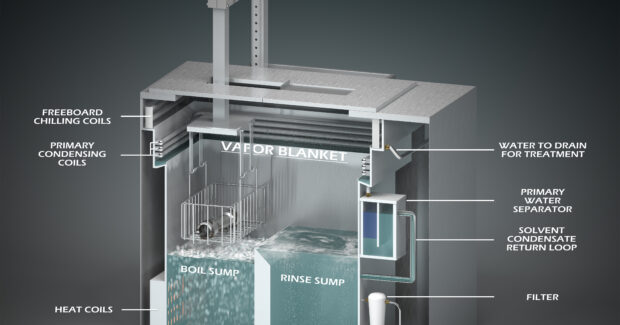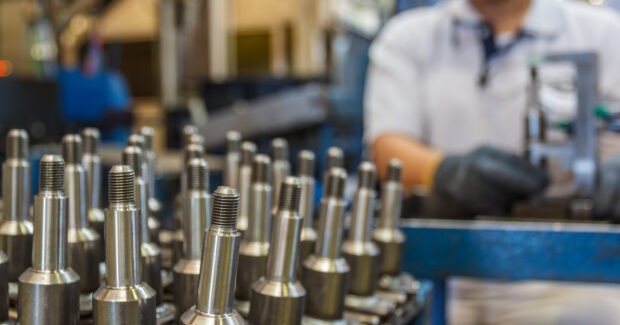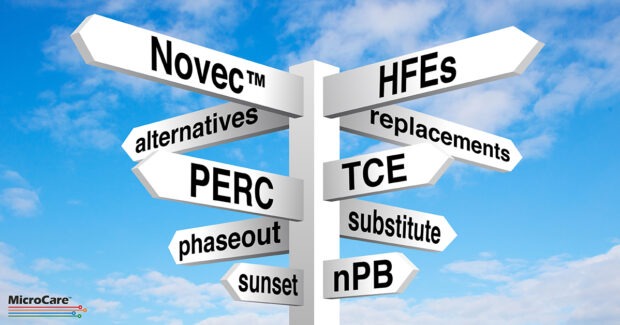The Importance of Effective Cleaning and Choosing the Right Method for Parts Manufacturing
Successfully plan for your shop’s cleaning processes, including the addition of new systems and fluids, by making it part of your primary decision making.
Posted: December 6, 2023
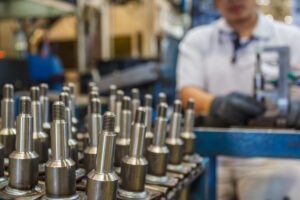
Cleaning is a critical aspect of metal fabrication and machine shops. The removal of contaminants such as oils, greases, polishing compounds, dust, dirt, and metal fines is essential for ensuring the functionality and aesthetic appeal of manufactured parts. Many metal fabricators have long depended on well-established vapor degreasing fluids for effective cleaning. However, when trusted cleaning fluids are discontinued, it’s crucial to choose a suitable replacement without disrupting operations.
This article explores the significance of effective cleaning, the factors to consider when transitioning to new cleaning fluids, and the choice between aqueous and solvent-based cleaning methods.
The Importance of Effective Cleaning
Effective cleaning is paramount for several reasons:
- Surface characteristics: The quality of cleaning directly impacts the surface characteristics of metal parts. Clean surfaces are essential for proper coatings, adhesion, and subsequent processes like electroplating and powder coating.
- Functional performance: Contaminants can affect the functional performance of parts, leading to issues such as reduced efficiency and premature wear. Clean parts ensure optimal functionality.
- Aesthetic appeal: In many industries, appearance matters. Clean, polished components enhance the overall aesthetic appeal of the final product.
Choosing Between Aqueous and Solvent-Based Cleaning
There are distinct advantages and drawbacks between these two popular cleaning methods. Determining which one is right for your shop is dependent on many factors including:
- Contaminants: The nature of contaminants influences the choice between aqueous and solvent-based cleaning.
- Part shapes: Consider the geometry of the parts; are the parts simple, complex or a mixture of both?
- Environmental impact: Sustainability goals should be a priority, regardless of the chosen method.
- Aqueous Cleaning:
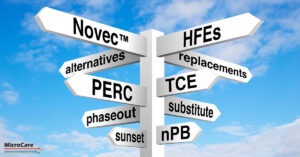
Aqueous cleaning uses a combination of water and chemical additives to get parts clean. Various compounds including detergents, surfactants, builders, emulsifiers, saponifiers, sequestering agents, and chelating agents are added to the water to enhance its cleaning capabilities. Aqueous cleaning is good at removing inorganic, polar contaminants that are soluble in water including rust, tarnish, heat scale, smuts, carbonaceous and metallic compounds. It works well on more simple shaped parts without crevices or blind holes where the water could potentially get trapped and corrode the parts. Aqueous cleaning can also be combined with other procedures, such as the application of rust-preventative coatings or brighteners, saving additional steps and processing time.
Aqueous cleaning typically uses three steps of washing, rinsing and drying. First the metal parts get washed in a series of machines, where a combination of hot water and ultrasonic agitation disintegrates and removes contaminants from the parts surfaces. Second, the parts are rinsed using a rinsing agent to eliminate any remaining detergent residues. Finally, the parts are meticulously dried using hot air knives or isopropyl alcohol, to prevent surface potting or flash rusting.
It is important to recognize that the effectiveness of aqueous cleaning hinges on the specific water additives used. These additives can range from mild to potent and from non-toxic to potentially hazardous. Compatibility testing is vital for all the materials involved to prevent any adverse reactions. Post-cleaning tests are also recommended to ensure that no reactive residues are left on the parts after the rinsing phase. The wastewater generated during aqueous undergoes a rigorous treatment process, involving filtration, distillation, deionization, and osmosis preparation to enable its safe disposal.
It is also important to note that despite its effectiveness in achieving cleanliness in metal parts, aqueous cleaning does come with a notable energy consumption footprint. These systems are characterized by their horizontal layouts and multiple tanks, which necessitate the use of high-pressure pumps to circulate water throughout the machinery, resulting in substantial power requirements. Additionally, heating the water for cleaning and using air knives for drying are high energy users. Lastly, aqueous cleaning introduces moisture and heat into the surrounding environment, requiring air conditioning to maintain ideal air humidity and temperature levels.
- Solvent Cleaning Using a Vapor Degreaser:
In contrast, solvent-based cleaning presents a more streamlined approach, consolidating the cleaning, rinsing, and drying processes into a single, vertically oriented machine, typically a vapor degreaser. The process initiates with the parts being submerged in continuously filtered and distilled cleaning fluid, which serves to dissolve and/or lift contaminants from their surfaces. In some cases, ultrasonic agitation may be employed to enhance cleaning power. The low surface tension of the cleaning solvent makes it especially good for cleaning complex, intricate parts since the fluid evaporates quickly without leaving residue behind.
Once the parts are removed from the cleaning fluid, they undergo a brief vapor rinse and drying process. Notably, the cleaning fluid condenses and returns to the vapor degreaser for reuse, mitigating the costs and environmental impact associated with hazardous waste disposal.
Vapor degreasing fluids are good for removing non-polar, organic soils such as machine and stamping oils, grease, corrosion protection agents and esters and baked-on resins. Furthermore, vapor degreasing stands out as a highly energy-efficient method. By utilizing modern, nonflammable solvents for cleaning and drying parts, vapor degreasers eliminate the need to heat water or power blowers and air knives, resulting in a significant reduction in electricity consumption. Additionally, vapor degreasing continuously purifies and redistills the solvent for reuse, reducing the necessity for waste treatment. Importantly, it does not introduce humidity into the factory environment, thereby lessening the load on air conditioning and other environmental systems.
Changes Ahead: Choosing the Best Vapor Degreasing Fluid
Traditionally, metal fabrication and machine shops have relied on popular cleaning fluids like n-propyl Bromide (nPB), Trichloroethylene (TCE), and Perchloroethylene (Perc) for their vapor degreasers. However, many companies are now transitioning to newer, environmentally friendlier cleaning fluids that maintain effectiveness while addressing concerns related to air quality. These alternatives are sustainable, boasting low global warming potential, and low ozone-depleting potential, aligning with modern environmental standards. When replacing your old solvent with a new modern, vapor degreasing fluid there are a few things to keep in mind.
- Equipment compatibility: Ensure the new fluid is compatible with your existing equipment, necessitating minimal modifications and minimizing disruptions in your production workflow.
- Long-term availability and sustainability: Choosing a fluid with a proven track record of effectiveness and environmental responsibility is essential, considering both short-term and long-term availability.
- Supplier support: Partner with a knowledgeable cleaning fluid supplier who can provide technical expertise, laboratory support, and excellent customer service.
In conclusion, choosing the right parts cleaning method involves careful consideration of contaminants, part shapes and environmental impact. The decision should be made holistically, taking all these factors into account to ensure the best possible cleaning results while maintaining safety and sustainability in your operations.
Regardless of the chosen method, minimizing water pollution, controlling emissions, and reducing waste disposal are essential goals. Aqueous and solvent-based cleaning methods both impact the environment, making it crucial to work with precision cleaning experts who specialize in both methods. They can assess your specific project and recommend fluids and processes that align with your environmental and efficiency goals.





